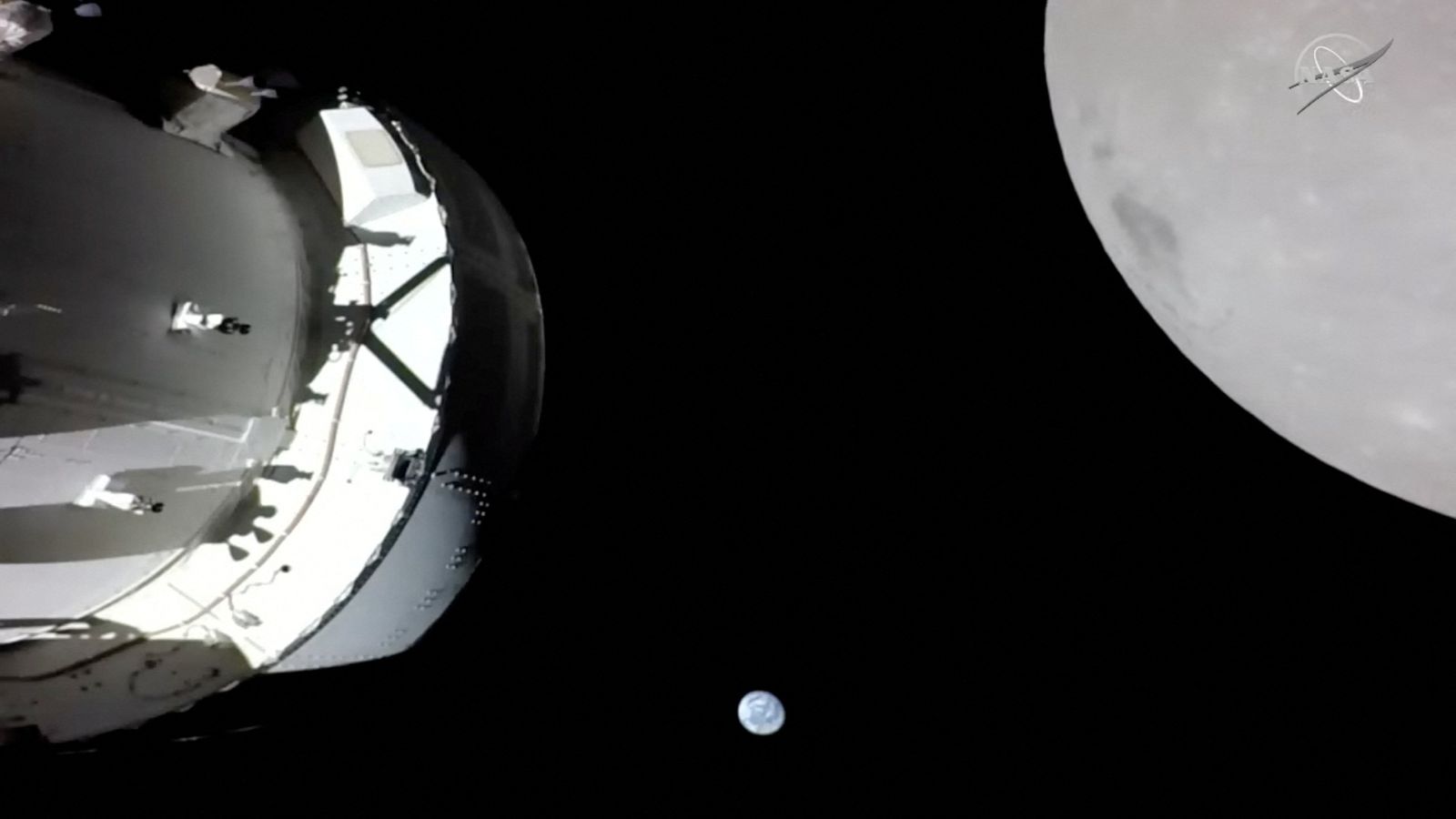NASA’s Orion capsule has made one final swoop around the moon on its way back home – taking in a couple of Apollo landing sites en route.
The capsule passed within 80 miles of the far side of the moon, using lunar gravity as a slingshot for the 237,000-mile (381,414km) journey back to Earth.
It has spent a week in a wide, sweeping lunar orbit.
Once emerging from behind the moon and regaining communication with flight controllers in Houston, Orion beamed back photos of a close-up moon and a crescent Earth – Earthrise – in the distance.
“Orion now has its sights set on home,” said mission control commentator Sandra Jones.
It is aiming for a Pacific splashdown on Sunday off the coast of San Diego.
The three-week test flight has exceeded expectations so far, according to officials.
Astronauts will be ‘living and working on the moon’ within a decade, says NASA
NASA’s Artemis mission is spending $93bn of taxpayer money on a return to the moon – but it has a good case
NASA’s Artemis mission to return humans to moon sees most powerful rocket ever launch into space
But the biggest challenge still lies ahead – hitting the atmosphere at more than 30 times the speed of sound and surviving the fiery re-entry.
During its lunar obit this week, the capsule passed over the landing sites of Apollo 12 and 14.
But at 1,200 miles (1,931km) up, it was too high to make out the descent stages of the lunar landers or anything else left behind by astronauts more than 50 years ago.
Read more:
People ‘living on the Moon within a decade’
First moon samples in 40 years brought back to Earth
Orion blasted off on 16 November on the debut flight of NASA‘s most powerful rocket ever, the Space Launch System (SLS).
The next flight – in as early as 2024 – will try to carry four astronauts around the moon.
Please use Chrome browser for a more accessible video player
The third mission, targeted for 2025, will feature the first lunar landing by astronauts since the Apollo moon programme ended 50 years ago this month.
Apollo 17 rocketed away on 7 December 1972 from NASA’s Kennedy Space Centre, carrying Eugene Cernan, Harrison Schmitt and Ron Evans.
Mr Cernan and Mr Schmitt spent three days on the lunar surface, the longest stay of the Apollo era, while Mr Evans orbited the moon.
Only Mr Schmitt is still alive.






